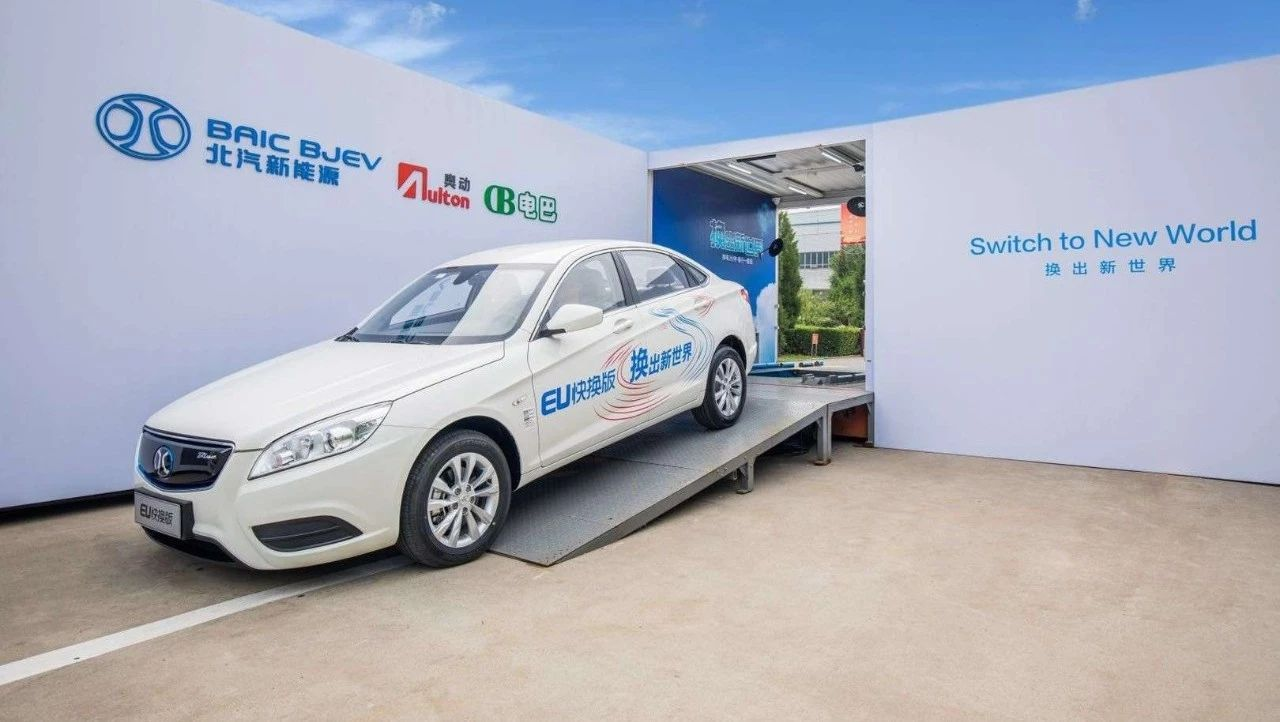On July 5th, BAIC New Energy held a launch event for the “Vehicle-to-Battery Separation Business Model”. The term “Vehicle-to-Battery Separation” is especially good as it makes the meaning of battery swapping clear to consumers.
Firstly, it is cheap. By separating the value of the battery, the ownership goes to BAIC, and the owner buys an EV without a battery, leasing the battery instead.
This is because, while the gas tank in a traditional car is cheap and has low value relative to the vehicle price, an EV battery pack is very expensive, with the cost of a 70 kWh battery pack for an ES8 costing over ten thousand yuan. Thus, the separation of the value of the vehicle and the battery, with the enterprise taking on the battery pack cost is a good move. The same goes for BAIC, NIO, and Renault.
The BAIC EU version of the fast-swapping system costs only 79,800 yuan, and the exchange model is charged based on mileage.
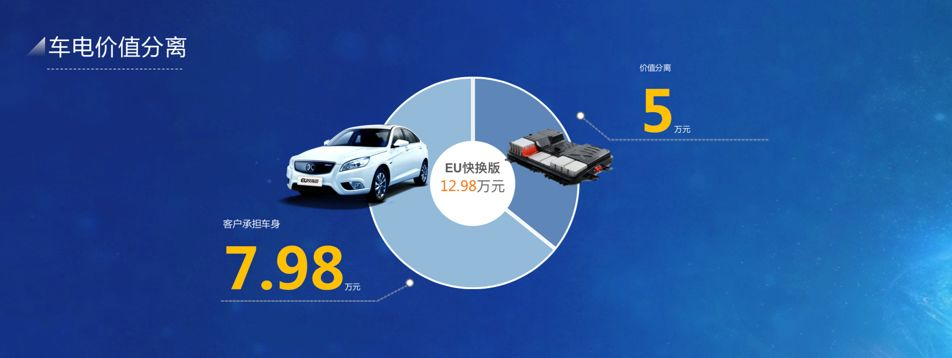
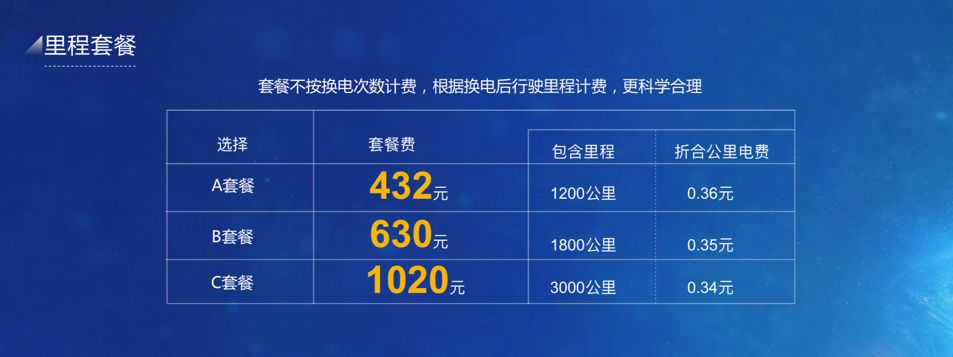
Secondly, it has a good experience that combines the characteristics of gasoline vehicles and electric vehicles.
Comparing with the pure electric car Tesla, which has the best overall experience, driving from Beijing to Qingdao at an average speed of 120 km/h with only air conditioning on, a fully charged Model S 75D can only cover 358 km, according to the MIIT test cycle. If we cut it down a bit to the US EPA’s more realistic cycle, the range drops to about 300 km, and actually, the practical range is between 250 km and 300 km when considering that you don’t want to run out of power entirely before recharging.
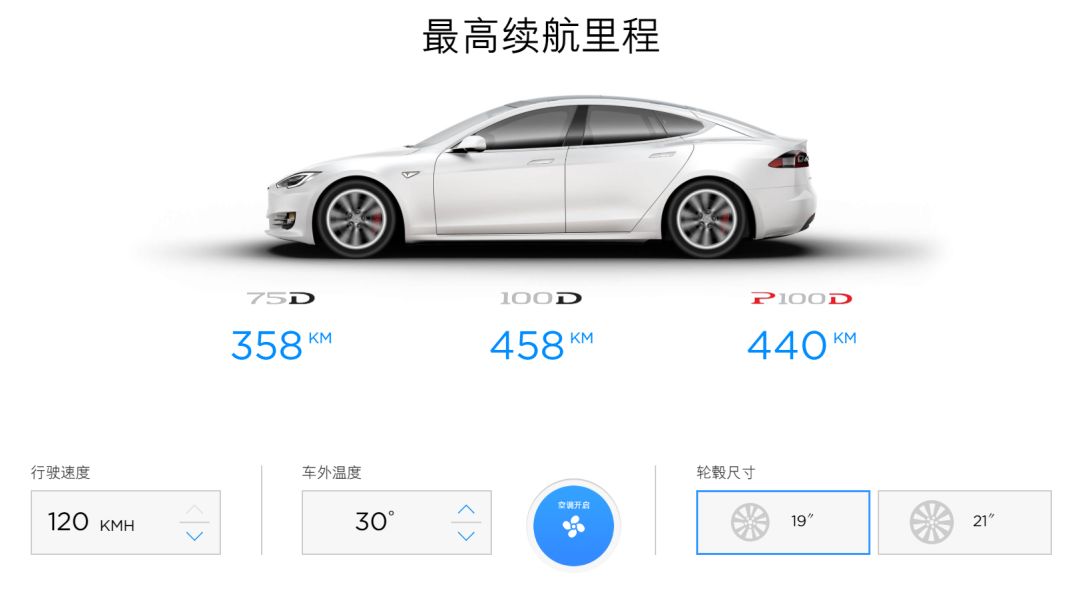
When it runs out of power, just recharge it. However, according to the Tesla official website, it takes 30 minutes to charge from 0% to 80%, and there is even an awkward sentence added, “You don’t necessarily need to charge the battery to above 80%.” Why is this added?
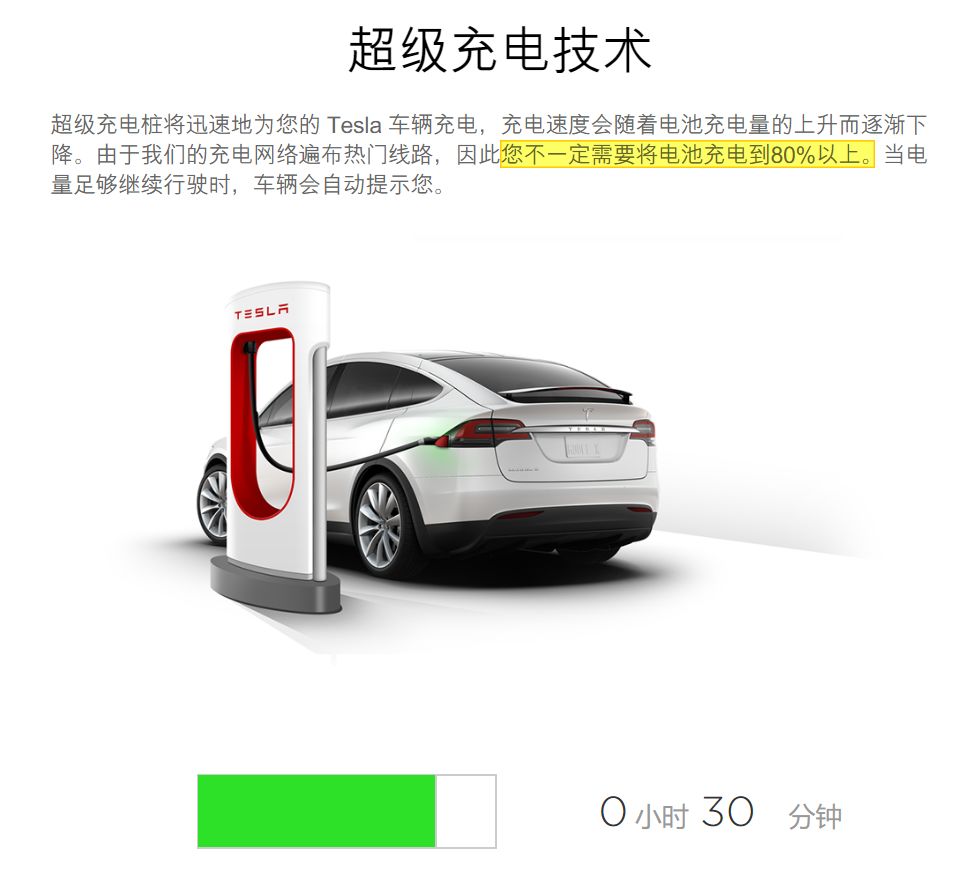 Because of the characteristics of lithium batteries, the closer they are to full charge, the slower the charging speed should be to ensure battery life. Therefore, it takes 53 minutes to charge the last 20% of the battery.
Because of the characteristics of lithium batteries, the closer they are to full charge, the slower the charging speed should be to ensure battery life. Therefore, it takes 53 minutes to charge the last 20% of the battery.
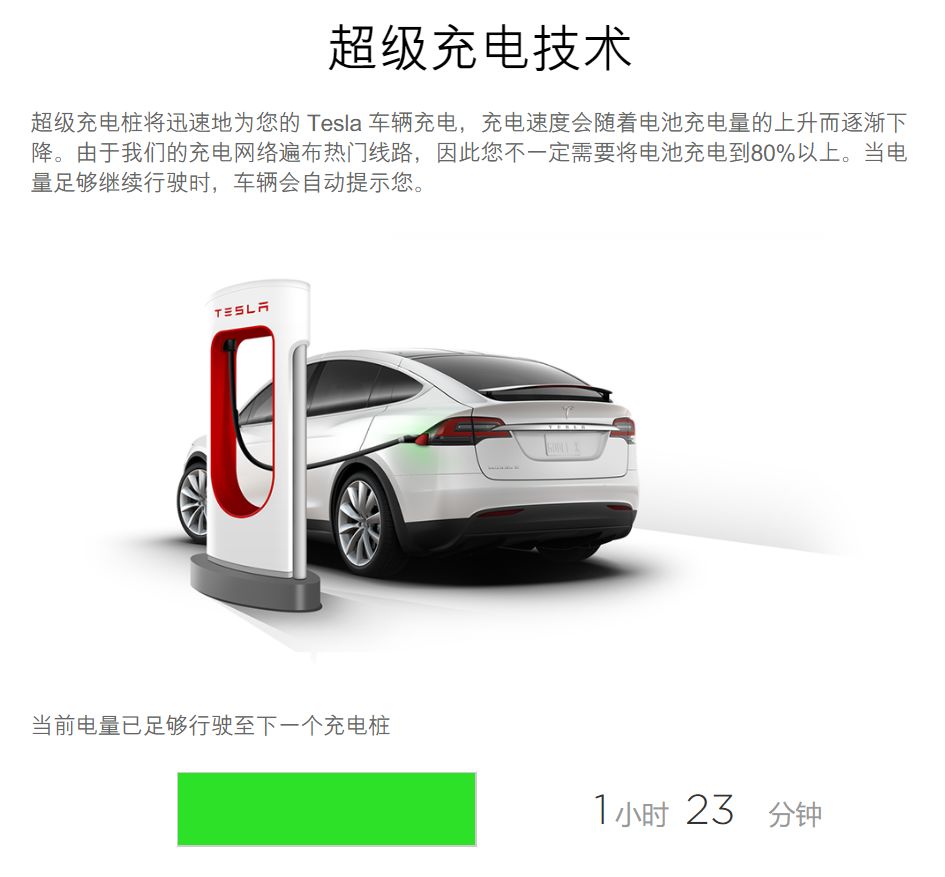
Tesla’s Supercharging network has just exceeded 10,000 charging piles. This spirit of pursuing an excellent user experience is commendable. And Tesla is currently the electric vehicle with the best comprehensive experience.
However, at least for now, in the process of replenishing energy (charging/refueling), the experience of electric vehicles cannot match that of fuel vehicles. Especially when traveling long distances, this shortcoming will be magnified.
On the other hand, the smoothness, comprehensive driving experience, and energy consumption cost of electric vehicles are far superior to fuel vehicles.
How can we combine the advantages of fuel vehicles and electric vehicles? Battery swapping.
Whether it is BAIC New Energy or the previous NIO, they have controlled the speed of battery swapping to below 3 minutes. This speed decisively solves the problem of slow charging of electric vehicles. Battery swapping is at least one of the best “combining the advantages of fuel vehicles and electric vehicles” solutions for now.
(Why is it one of them? Extended-range electric vehicles: the motor drives the wheels, and the engine drives the generator to charge the battery. Compared with pure electric vehicles, it only adds a power generation module. The motor directly drives the wheels, and energy is replenished through refueling to combine the advantages of fuel and electric vehicles.)
The above is “Why You Should Buy a Car that Supports Battery Swapping”. In fact, the advantages of battery swapping for enterprises and regulatory authorities are also very clear.
First is safety. Most people, especially those in the traditional automotive industry, instinctively believe that battery swapping is not safe. The automotive industry requires high reliability and highly stable safety architecture. Can the safety and reliability be ensured when hundreds of kilograms of modules can be replaced from the chassis position in three minutes?
You need to think about this issue in this way. Ensuring safety is a prerequisite for any innovation in the automotive industry. Whether it is BAIC, NIO, or the pioneers on the battery swapping track, Better Place and Tesla. If adopting the battery swapping model can reduce the safety of the whole vehicle or even cause the battery module to drop due to looseness, then battery swapping will never be commercialized.
Renault signed the 100,000th battery rental agreement in April 2017. During the decade from 2007 to 2017, 100,000 Renault electric vehicles with swappable battery architecture were put on the road, and there were no reported accidents due to a decrease in vehicle safety caused by battery swapping.
Why is battery swapping considered safer?
When automakers decide to adopt the battery swapping model, they must ensure that all battery packs in the entire battery circulation system are in a healthy and safe state. This means that every replaced battery pack must be fully inspected and any abnormal status of the battery must be removed. However, fast charging does not include this step of inspecting batteries.Second, improved efficiency. Originally, it took at least 30 minutes to fully charge a battery, but now it only takes one-tenth of that time. This may not be noticeable to private car owners, but for taxi fleets that need multiple charges or swaps per day, significant operational time can be saved.
Third, comprehensive cost advantages. BAIC’s battery swapping stations have a maximum efficiency of 300 swaps per day, can be built in four hours, and take up an area of only 67.5 square meters (less than five parking spaces). Both in terms of construction speed and land use, they outperform equivalent supercharging stations. Li Bin of NIO has expressed similar views. However, in terms of core construction costs, the cost of building a BAIC battery swapping station is 3 million yuan, which is likely lower than that of a similar-sized Tesla supercharging station.
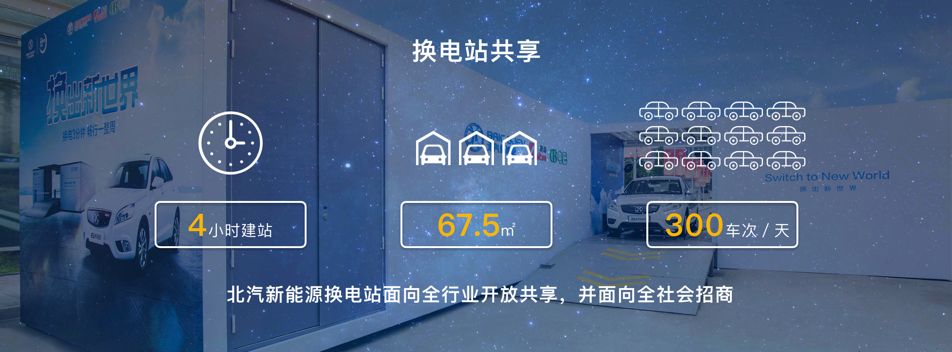
Fourth, longer battery life. As charging time is no longer a priority, battery swapping can extend the battery’s cycle life by at least twice that of fast charging. The main room for imagination lies in the second use of batteries.
Fifth, lower peak electricity demand. The peak electricity demand of a battery swapping station is much lower than that of a supercharging station. As electric vehicles become more popular, peak electricity demand will become more severe. This is why Tesla is preparing to combine third-generation supercharging stations with energy storage batteries and solar panels to completely disconnect from the national power grid.
It seems that battery swapping should be the mainstream, but in fact, there are many problems with it.
First, long-term user education of private car owners is required, so that they can understand that batteries can be leased instead of owned. Renault has already verified this in the mid-to-low-end market, and 93% of users still choose battery leasing after Renault supports whole-vehicle sales. The question is whether NIO can convince luxury car users to accept battery leasing.
Second, the business model is more important. Both BAIC and NIO hold assets that other car companies do not have: battery packs. Coordinated operation and dispatch of a large-scale battery pack is a model that requires heavy investment.
If the efficiency of single-seat battery swapping stations is to be improved, the best way is to have enough vehicle models that support swapping. In addition to standardizing the battery pack specifications for its own vehicle models such as the ES8 and ES6, NIO’s joint ventures with Changan and GAC will also adopt the same specifications of battery packs, which can improve the efficiency of the swapping stations and reduce battery pack costs through economies of scale. BAIC has also announced that it will open its battery swapping technology and stations to the entire industry.
Third, battery swapping as the most optimal solution for a particular stage is not sustainable in the long run. Once the driving range of pure electric vehicles exceeds a certain critical value, the advantages of battery swapping will be greatly reduced.Let’s do some calculations. Today, the EPA range of Tesla Model S 100D has exceeded 500 km. In three years, the energy density of the battery pack will increase by 15% to reach 600 km. At the same time, the density of charging stations across the country will further increase, and the fast charging specifications will double to reach 300 kW – 350 kW, achieving a 500+ km range in just 20 minutes of charging. When the range of a vehicle reaches 600 km, the motivation for battery swapping will decrease significantly.
For BAIC and NIO, their huge battery assets can still be reused in energy storage devices. However, battery swapping stations themselves will become sunk costs when the willingness of users to swap batteries decreases. BAIC has already built 100 battery swapping stations in Beijing, with an average service radius in the city area of only 2.78 km. NIO also promised to deploy battery swapping stations in major cities nationwide within a service radius of 3 km. In the land-scarce cities like Beijing, Shanghai, Guangzhou and Shenzhen, if the specifications of the batteries among major car companies are not standardized, the different specifications of battery swapping stations will also waste social resources.
NIO’s CEO, William Li, previously mentioned that the switching to battery swapping mode is mainly to ensure the current user experience. When the battery technology level reaches the point that the single charge range can reach 1,000 km, the advantages of battery swapping will no longer be obvious. From this statement, it seems that NIO is likely to have systematic consideration for potential exit mechanisms in the future.
For consumers, if the budget is sufficient and they still feel dissatisfied with the replenishment experience of supercharging, then the options are battery swapping or range extension. Only these two technical routes have the opportunity to create a comprehensive experience that surpasses Tesla’s smart electric products.


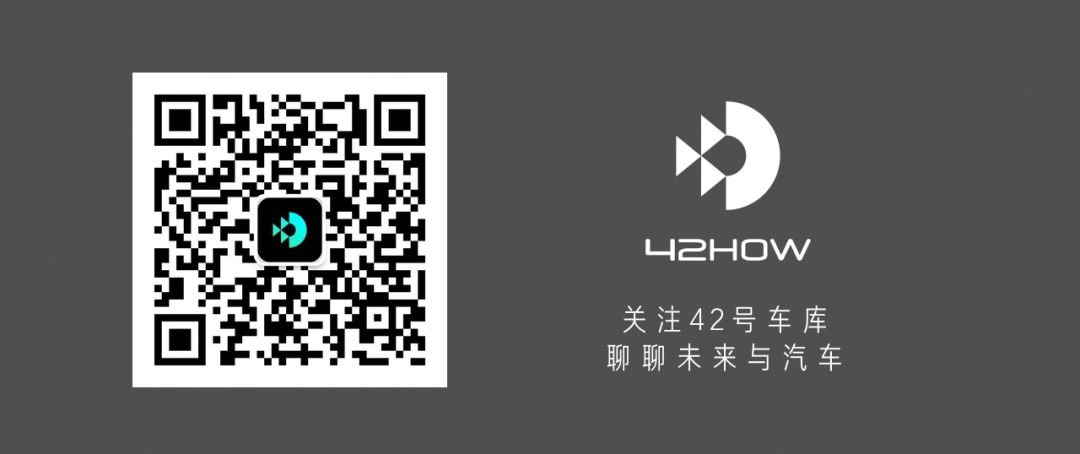
This article is a translation by ChatGPT of a Chinese report from 42HOW. If you have any questions about it, please email bd@42how.com.
